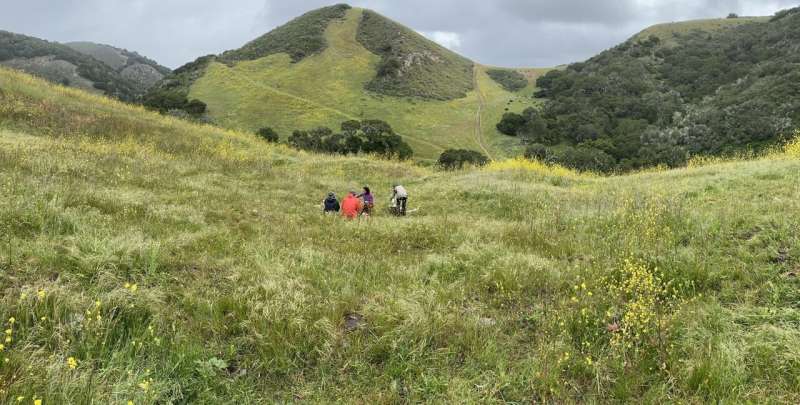This article has been reviewed according to Science X's editorial process and policies. Editors have highlighted the following attributes while ensuring the content's credibility:
fact-checked
peer-reviewed publication
trusted source
proofread
Many more bacteria produce greenhouse gases than previously thought, study finds

Caltech researchers have discovered a new class of enzymes that enable a myriad of bacteria to "breathe" nitrate when in low-oxygen conditions. While this is an evolutionary advantage for bacterial survival, the process produces the greenhouse gas nitrous oxide (N2O) as a byproduct, the third-most potent greenhouse gas, after carbon dioxide and methane.
However, unlike carbon dioxide, nitrous oxide is not long lived in the atmosphere, meaning that any interventions to curb its emission can have immediate benefits. For example, overuse of fertilizer for crops provides soil bacteria with abundant nitrate, which they then convert into nitrous oxide—more judicious application of fertilizer could both cut down on greenhouse gas emissions and save farmers money.
"Nitrous oxide is a much more difficult greenhouse gas to monitor than carbon dioxide, but with this research we now know there are way more sources producing nitrous oxide than previously thought," says Woody Fischer, Professor of Geobiology and senior investigator on the new study.
"Understanding where and when this gas is released into the atmosphere can help us make smarter decisions. There's a not-too-distant future in which a farmer has information about the communities of microbes present in their soil, enabling informed decisions about how and when to use fertilizer for landscape health."
A paper describing the research appeared on June 20 in the journal Proceedings of the National Academy of Sciences.
Led by former postdoctoral scholar Ranjani Murali and principal investigator James Hemp, the team examined the genomic sequences of tens of thousands of different microbial species throughout various environments on Earth. Most cells in the biosphere utilize certain proteins called reductases to breathe, or respire, oxygen, but Murali and her team discovered a wide swath of reductases that had evolved closely related proteins to respire nitric oxide, producing nitrous oxide in the process.
Nitric oxide and nitrous oxide are intermediate chemicals produced during denitrification, the process by which bacteria break down nitrate, the chemical found in fertilizers. Bacteria are able to switch from respiring oxygen to nitric oxide in many different environments—wetlands, alpine soils, lakes, and so on—when oxygen levels start to drop below approximately 10% of atmospheric levels.
"We've missed large regions of the biosphere where nitrous oxide was being produced because these proteins were undiscovered," Fischer says. "Now we can much more accurately predict, through genomic sequence information, which organisms in which environments are producing nitrous oxide. There are way more than we thought."
Geobiologists had previously believed that anaerobic pathways like nitrate respiration evolutionarily came before the ability to breathe oxygen, in our early single-celled ancestors. This study "flips the script," according to Fischer, demonstrating that the proteins that enable nitrate respiration actually evolved from those that respire oxygen, two billion years ago.
"Microbiologists often predict what metabolisms microbes are capable of performing based on comparative genomics," explains co-author James Hemp, a former Caltech postdoctoral scholar now of the company Meliora.bio in Utah.
"However, these hypotheses are rarely tested experimentally. Our work has dramatically increased the biochemical diversity of one of the most studied enzyme families in microbiology. This should serve as a warning that automated metabolic analysis without experimental verification can lead to incorrect conclusions of the functions of microbes and communities."
Murali, now a faculty member at University of Nevada Las Vegas, is the study's first author. In addition to Murali, Fischer, and Hemp, Caltech co-authors are former graduate students L. M. Ward (Ph.D. '17) now of Smith College and Usha F. Lingappa (Ph.D. '21) now of UC Berkeley. Additional co-authors are Laura A. Pace of Meliora.bio, Robert A. Sanford and Robert B. Gennis of University of Illinois at Urbana-Champaign, and Mackenzie M. Lynes and Roland Hatzenpichler of Montana State University.
More information: Ranjani Murali et al, Diversity and evolution of nitric oxide reduction in bacteria and archaea, Proceedings of the National Academy of Sciences (2024). DOI: 10.1073/pnas.2316422121
Journal information: Proceedings of the National Academy of Sciences
Provided by California Institute of Technology




















